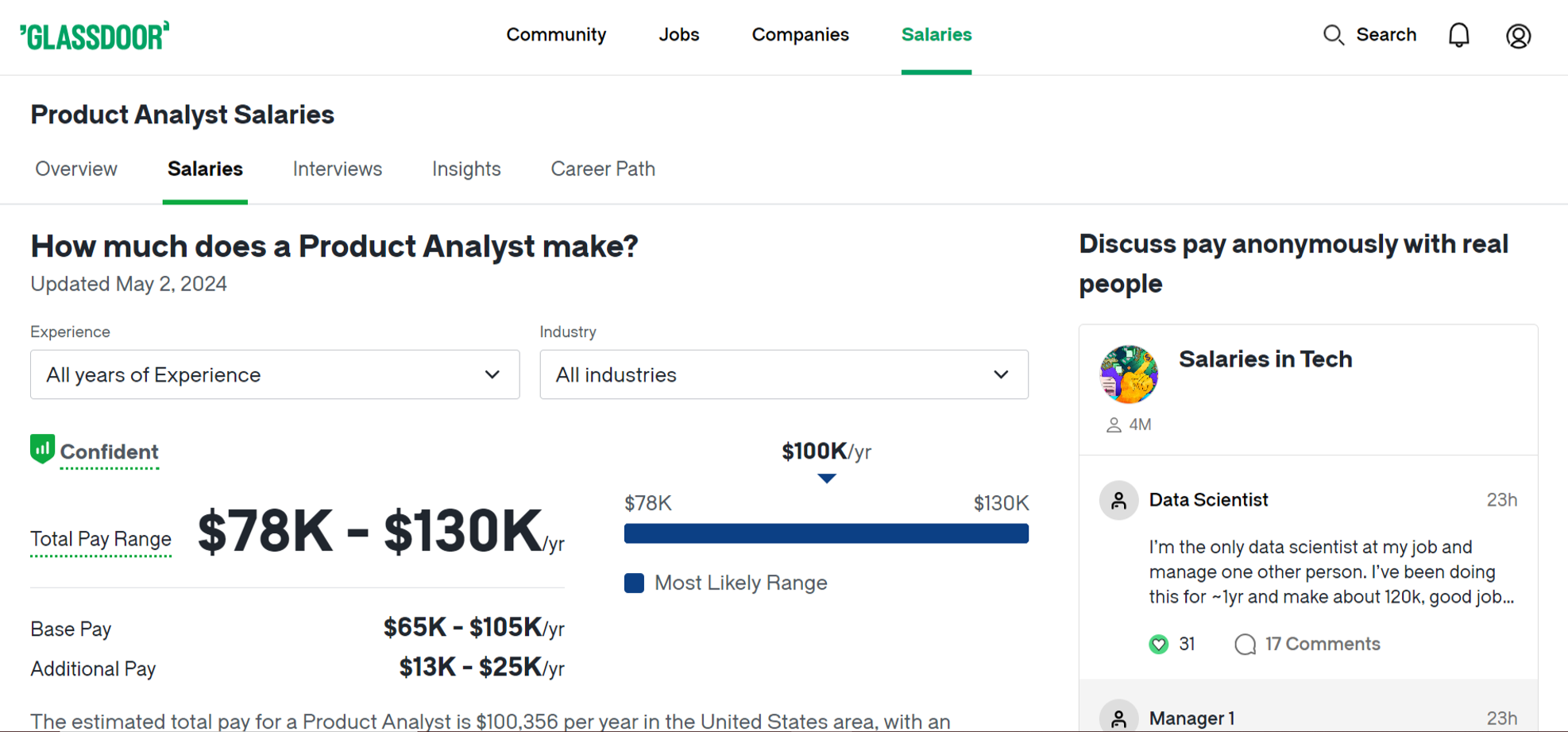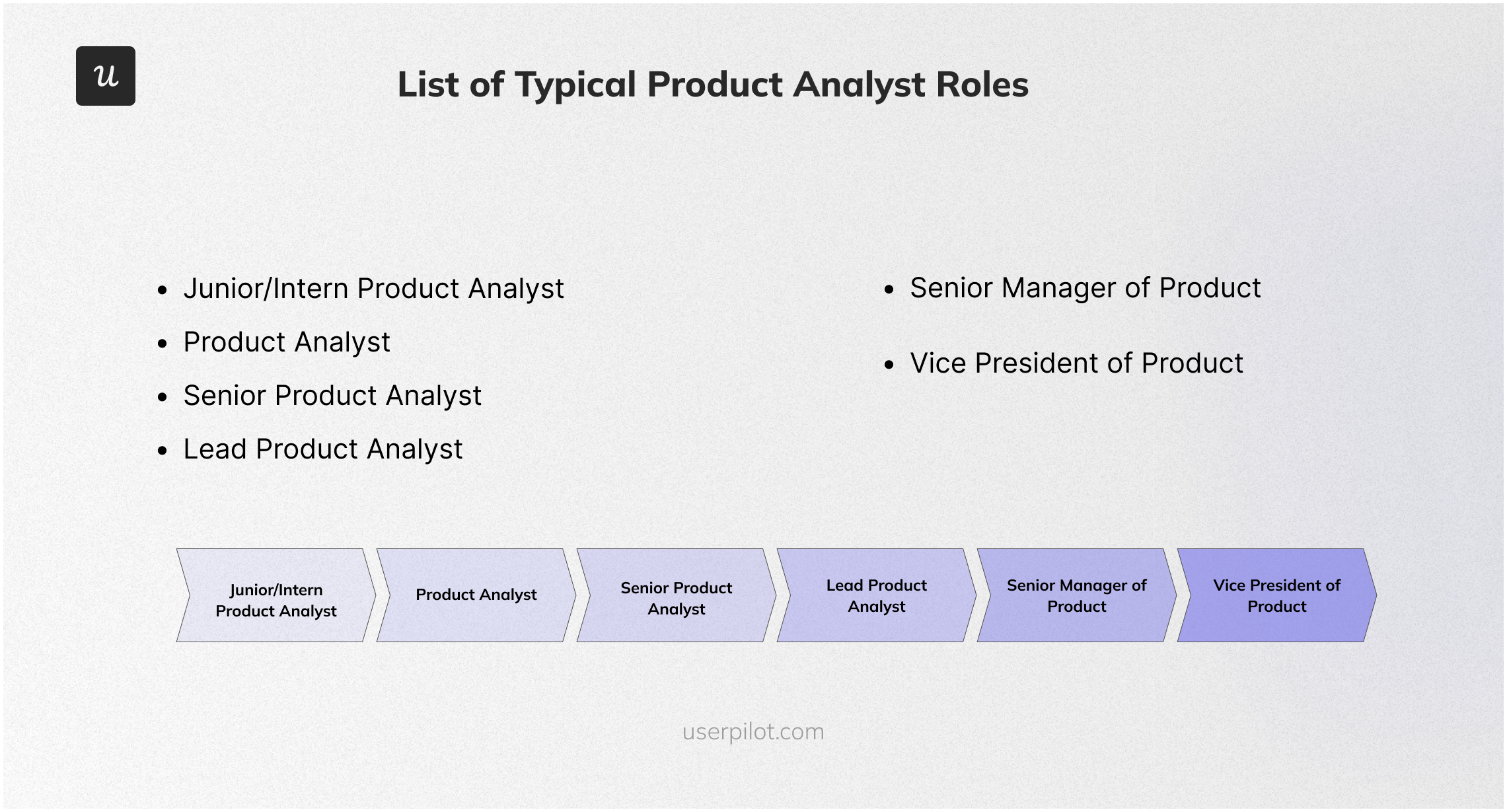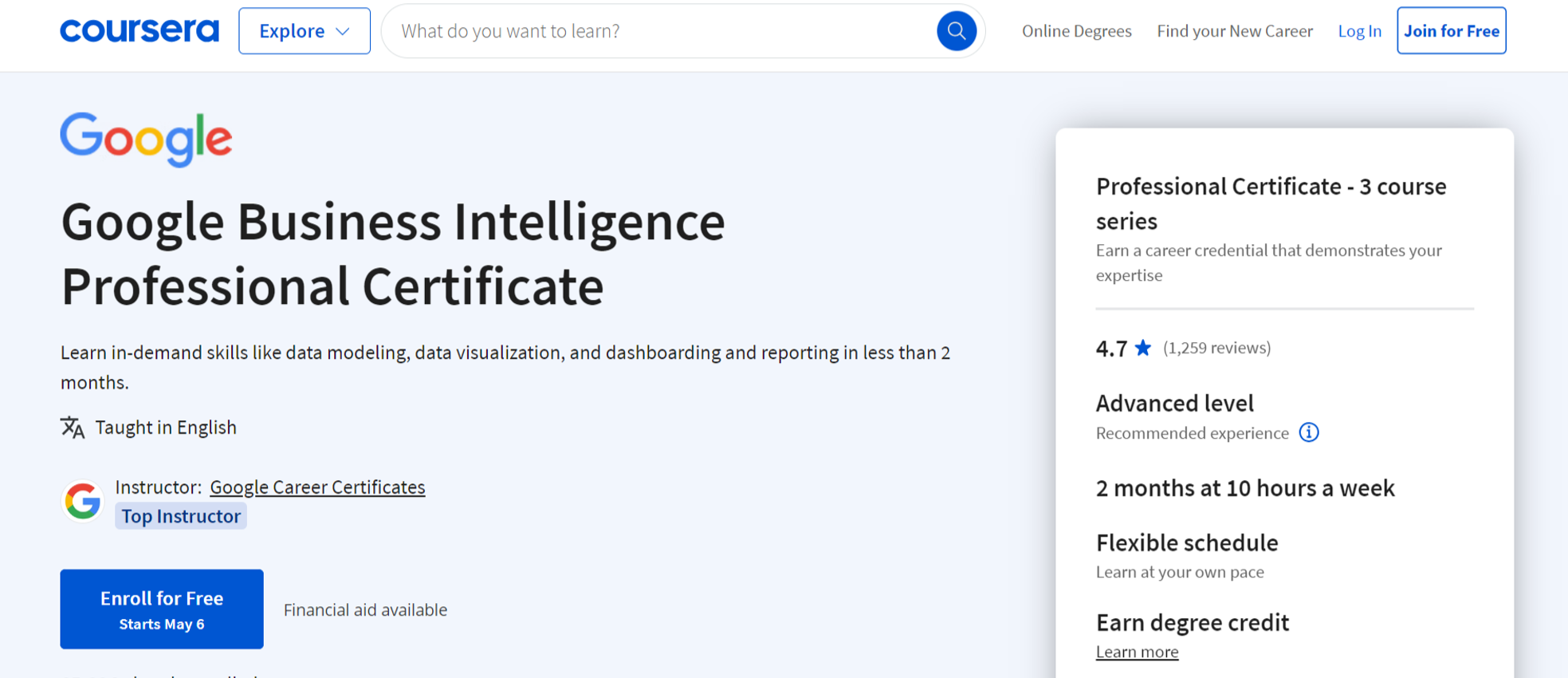
Starting a career as a product analyst requires understanding the key steps, skills, and experiences needed for success.
In this article, we will outline the typical journey for a product analyst, covering educational requirements, entry-level positions, potential advancements, and long-term opportunities.
Without further ado, let’s get into it!
Try Userpilot Now
See Why 1,000+ Teams Choose Userpilot

What is a product analyst?
A product analyst is a professional who conducts product research, analyzes, and interprets such data to make accurate decisions about the product. Product analysis involves two major things: the product and the data.
The product analyst is a crucial role in a company because it helps you gain an understanding of your product about the user which is important to drive enough sales and grow as a company.
What does a product analyst do?
When it comes to working on a product, assumption is like shooting arrows into the dark, it will lead to a waste of effort and resources, hence the need for clear insights. That’s where a product analyst comes in. The product analyst provides clear and actionable insights to stakeholders about the product and enables them to make data-driven product decisions.
Here is a breakdown of what a product analyst does:
- Market research for trends identification: A product analyst conducts market research, gathers historical data, and identifies the trends and patterns that are pivotal in making the right product decisions.
- Collection of customer feedback: A product analyst gathers customer feedback via in-depth one-on-one interviews, surveys for a focus group, or even opinion polls.
- Data analysis: Once all the data has been collected, the product analyst analyzes the data, interprets it, and makes product recommendations to stakeholders.
- Presentation of report findings to stakeholders: Based on the data obtained from the research and analysis, the product analyst presents their report to company stakeholders.
- Monitoring of Product Performance: After the product launch, the product analyst monitors the product performance, and keeps track of product feedback from customers and industry/market trends that enable the company to make necessary changes when needed.
It is important to note that a product analyst is needed in every phase of the product lifecycle and is always relevant in the company.
Product analyst’s main responsibilities
The responsibility of a product analyst can be summed up as providing insights that drive accurate and data-driven decisions. Without the product analyst, stakeholders are left to make important decisions based on guesswork.
Here is a detailed breakdown responsibilities and duties of a product analyst:
- Carrying out adequate customer research and gathering data about the use to analyze customer behavior.
- Carrying out extensive market research to identify patterns and trends that serve as pointers for product strategies.
- Making inferences from data obtained and reporting it to stakeholders simply and visually.
- Monitoring the product market performance and proposing necessary changes.
- Assist in developing the product roadmap, aligning it with company goals, market trends, and customer requirements.
- Collaborate with cross-functional teams, including engineering, marketing, sales, and customer support, to ensure successful product delivery and adoption.
- Monitor competitor products and strategies, identifying strengths, weaknesses, and opportunities for differentiation.
- Establish and maintain a structured feedback loop with customers, internal stakeholders, and other relevant parties to gather insights for continuous product improvement.
Product analyst salary
According to Glassdoor, the estimated total pay for a Product Analyst is $100,309 per year in the United States, with an average salary of $82,487 per year. There is an estimated additional pay of $17,821, depending on your position and where you are working.
One of the most important determinants of your salary is your level of experience.
To give you a more accurate insight, here is a breakdown:
- 0-1 years: $68K – $104K/year
- 1-3 years: $75K – $114K/year
- 4-6years: $82K – $131K/year
- 7-9 years: $87K – $143K/year
- 10-14 years: $97K – $161K/year
- 15+ years: $107K – $185K/year
Different industry sectors have different salary ranges, and the industries with the highest demand pay the highest. The top 3 paying industries are media and communication, information and technology, and pharmaceutical and biotechnology.
- Media and communication: $107,267/year
- Information Technology: $101,915/year
- Pharmaceutical and Biotechnology: $100,743/year
With the remote work structure, it is not uncommon to find companies offering location-based salaries. Here are the midpoint salaries for the following large cities in the United States, according to Glassdoor:
- San Francisco: $106,208/year
- New York: $93,239/year
- Boston: $85,844/year
- Washington: $91,928/year
- Chicago: $83,134/year
Product analyst career path
The product analysis career path starts with the entry-level role of a junior or intern product analyst, which proceeds to Lead product analyst and goes as high as the Vice president of Product role. Here is the typical career path of a product analyst:
- Junior/Intern product analyst: The junior product analyst role is entry-level, where you get hands-on experience in product analysis. You are assigned tasks, and you assist senior product analysts in user analysis and product research, among other functions. You also learn how to use product research tools.
- Product analyst: When you gain more experience and show competence in your junior analyst role, you are promoted to product analyst. In this role, you perform functions like analyzing data, extracting insights, and preparing reports.
- Senior product analyst: A senior product analyst develops actionable insights and strategies based on the research and analysis results.
- Lead Product Analyst: A lead product manager leads the product analysis efforts and monitors the research, analysis, reporting, and strategy development.
- Senior Manager of Product: A senior manager of a product works closely with other product professionals, like product managers, to develop and implement product strategies obtained from product analysis.
- Vice President of Product: This is the highest role in the product analysis career, where you oversee all matters related to product analysis, development, and product lifecycle.
How to become a product analyst
Sometimes the job description for a product analyst includes having a bachelor’s degree in:
- Economics.
- Statistics.
- Computer science.
- Business or other related fields.
However, the requirement is not stringent as long you have relevant online certifications and necessary technical skills and soft skills. There are courses that are verified and well-acknowledged for a product analyst to start your journey of becoming one. Here are recommended certificate courses to kickstart your product analysis career:
- IBM Data Analyst Professional Certificate: In this extensive course, you will learn how to use data analysis tools like Excel, Tableau, and SQL, together with data visualization and reporting. You also get hands-on projects to work on so you can have a portfolio of work at the end of the course and a globally recognized IBM certificate.
- Google Business Intelligence Professional Course: This intensive course is geared toward individuals looking to start a career in product analysis or upskill. You will learn data visualizing, reporting, and dashboarding within the space of 2 months and obtain a certificate in business intelligence from Google.
- Real-world Product Management: Because the product analyst is involved throughout the product lifecycle, a basic knowledge of product management is needed. This course will give you comprehensive exposure on how to research the product and users, and also how to interact with other product professionals involved in the product lifecycle.
After you obtain the necessary skills and certifications in product analysis, you can start looking for an internship or junior role.
Tips for getting your first intern/junior product analyst role include:
- Joining product analyst communities and connecting with people in the career path.
- Building your brand on platforms such as LinkedIn.
- Reaching out to recruiters of companies you wish to join especially when you notice an opening.
- Browsing online for product analyst roles in your desired industry around you and applying.
Best resources for product analysts
There are insightful resources on the internet on product analysis, ranging from books to webinars to podcasts to blogs. Here is a compilation of the best resources for product analysis:
Best books for product analysts
- Product Analytics: Applied Data Science Techniques for Actionable Consumer Insights by Joanne Rodrigues-Craig: In the book, Joanne explained in detail how to gain customer insights through data. It’s a book anyone looking to get into product analysis should read.
- Lean Analytics: Use Data to Build a Better Startup Faster by Alistair Croll & Benjamin Yoskovitz: The book explains how to leverage data to build your business and contains over 30 case studies based on real-world scenarios and interviews with founders and investors.
- Now You See It: An Introduction to Visual Data Sensemaking by Stephen Few: The book explains data visualization extensively, including how to analyze and interpret data and also present them to stakeholders.
Best webinars for product analysts
Here’s a curated list of top webinar sources packed with valuable content for product analysts covering various areas of expertise:
- Userpilot hosts webinars on product management topics where data analysis plays a crucial role. Look for webinars on user research, product metrics, and data-driven decision-making.
- Product Alliance is a product management community that occasionally hosts webinars on using data to inform product decisions. These webinars can help product analysts understand how their work impacts the product roadmap.
- DataCamp offers free and paid webinars on various data analysis topics, including SQL queries, data manipulation in Python or R, and data visualization best practices.
- Tableau frequently hosts webinars on data visualization using their popular software. You can also find webinars on broader data analysis topics.
Best blogs for product analysts
- Userpilot: The userpilot blog covers different topics on product analysis in-depth.
- Product Talk: Product Talk is a blog resource for every individual in product, including product analysts, product managers, and product marketers.
- IBM Big Data and Analytics Blog: The IBM Big Data and Analytics Blog is where you get to read from thought leaders in the data analytics world.
Best podcasts for product analysts
- RAMP By InsightSquared: The podcast by InsightSquared provides insight on how to scale your SaaS using analytics.
- Best Podcast for Data Visualization: Data Stories: The podcast focuses on data visualization and features real-world scenarios.
- The Product Podcast: The product podcast speaks to product professionals and covers topics ranging from interviews with top product individuals to career advice for people looking to get into the product world.
Best tools for product analysts
- Best tool for Product Analysis (Userpilot): Userpilot gives you insight into your product performance and helps you understand user behavior.
- Best tool for Product Insights (Mixpanel): Mixpanel helps you understand your customer experience and find out what works and what does not.
- Best tool for Business Intelligence (Tableau): Tableau is a business intelligence tool that helps you transform your data into insights you can easily present to stakeholders.
- Best tool for Data streamlining and presentation (Power BI): With Power BI, you can connect data from different sources and analyze and visualize them for easy data reporting.
- Best tool for Data Visualization (Google Charts): Google Charts provides a variety of chart and graph types for top-notch data visualization, making your presentation detailed and insightful.
Conclusion
We hope our article has given you a good overview of the career path for product analysts. Whether you’re just starting out or looking to advance, the key is to stay curious, keep learning, and remain open to new opportunities along the way.
Looking into tools for product analysis? Userpilot is an all-in-one product platform with engagement features and powerful analytics capabilities. Book a demo to see it in action!












